Chapter 2 – Barbering Tools and Products
2.1 Barbering Tools
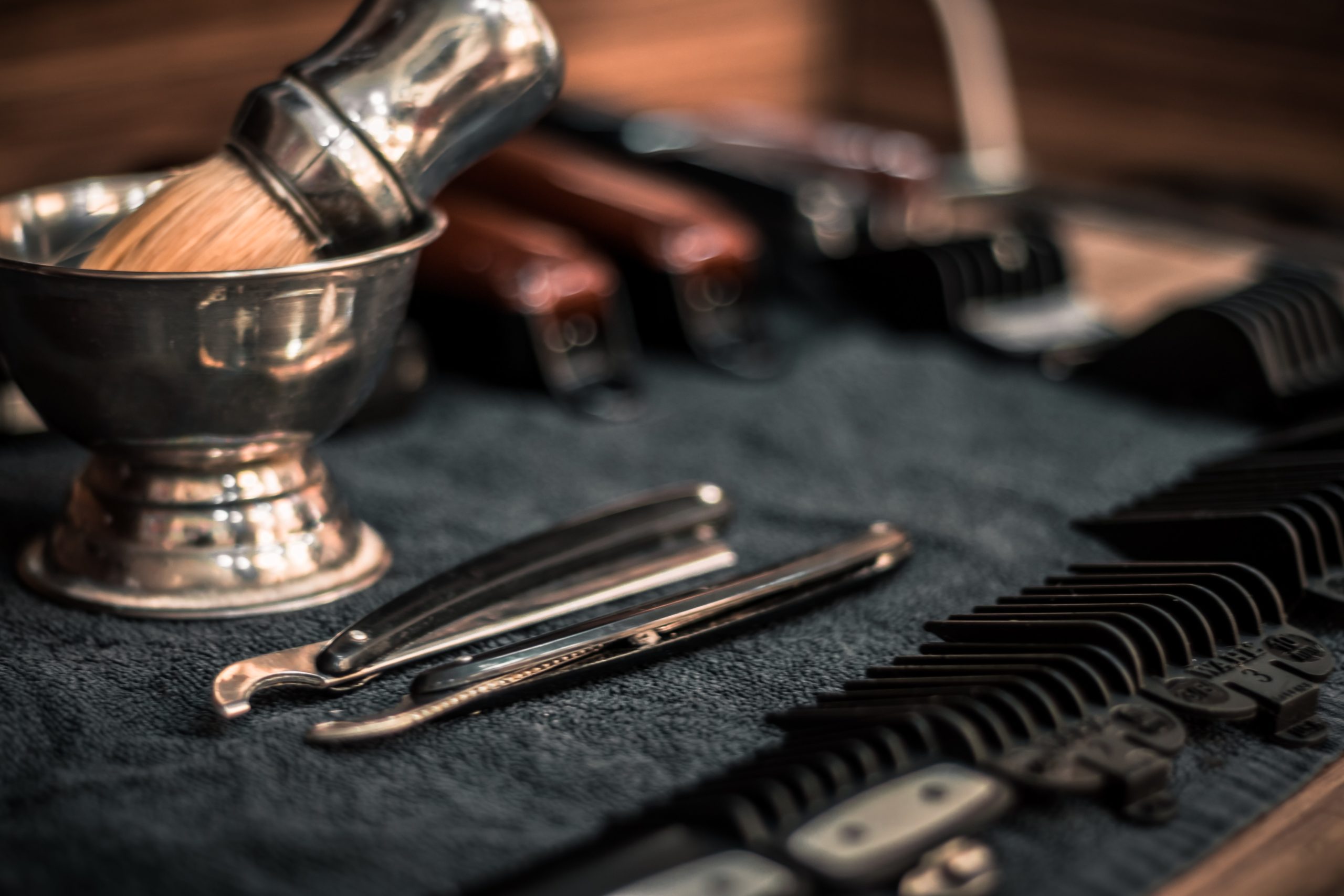
In Level 1 Hairstylist, you learned about the tools that are used for haircutting, including their parts and functions. Let’s explore the tools that are used for facial hair design and hair removal in both the nape and facial areas.
Shears
Shears are used for haircuts to remove length and bulk and to create the shape of the design. A shear-over-comb technique is used for the removal of nape hair, facial hair design, and the trimming of eyebrows. In addition, shears can be used to remove hair entirely by placing the blades flat against the skin. However, when extreme closeness is desired, clippers, trimmers, or a razor are preferable to shears because they create a closer result.
Video: Using Shears to Trim the Side of a Beard
Note: Video has no sound.
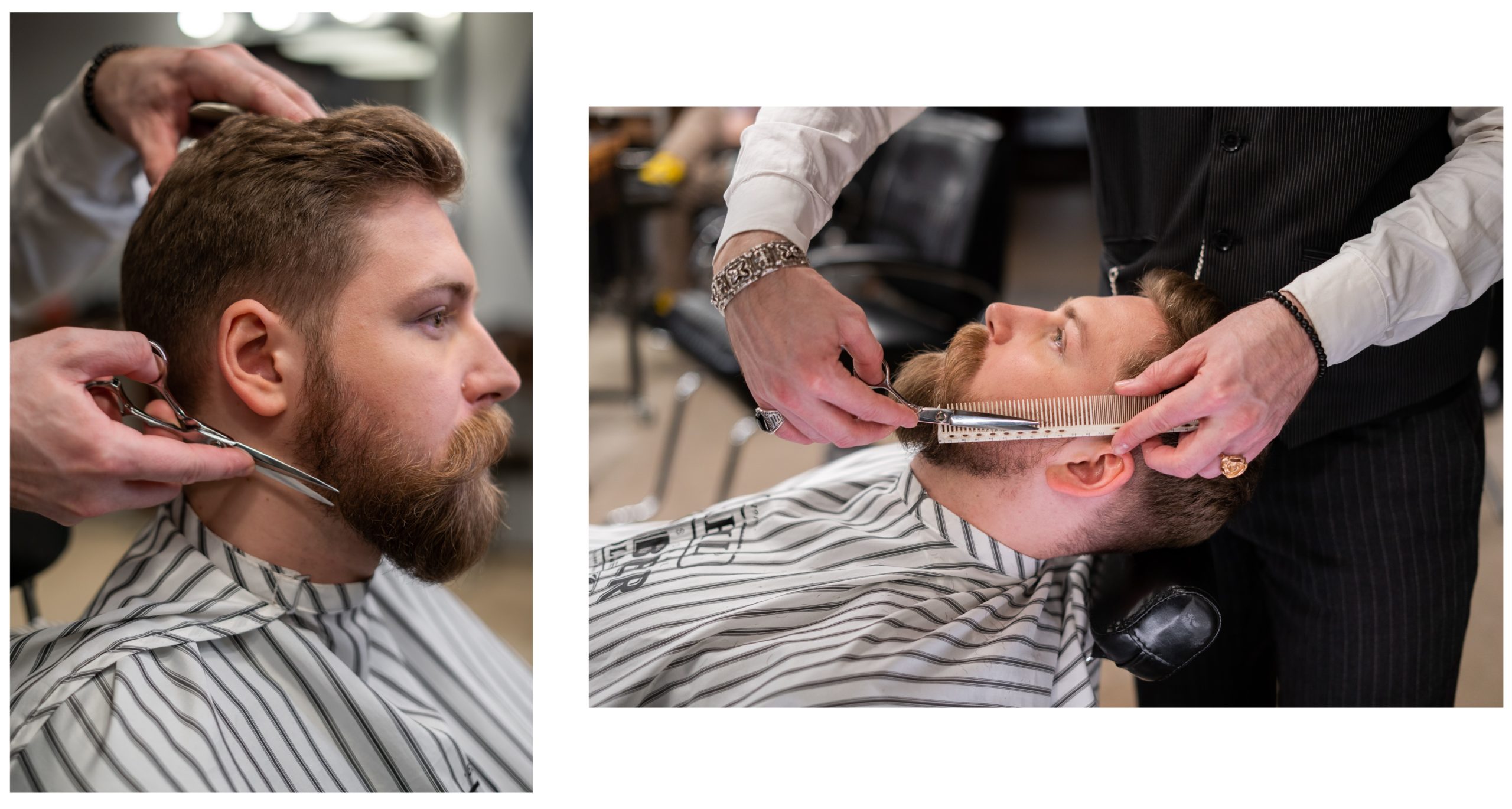
Clippers
Clippers are used for various techniques when performing a hair reduction service, such as length removal and blending, or to remove the majority of the hair prior to a shaving service. There are many styles of clippers available. Some features to consider when purchasing a clipper are size, weight, performance, and power supply (corded or cordless).
Many clippers come with a standard set of blades attached and rely on additional guard attachments to determine the length the hair will be cut. Alternatively, some brands of clippers have detachable blades in various sizes that are designed to cut the hair to different lengths without the need for a guard attachment.
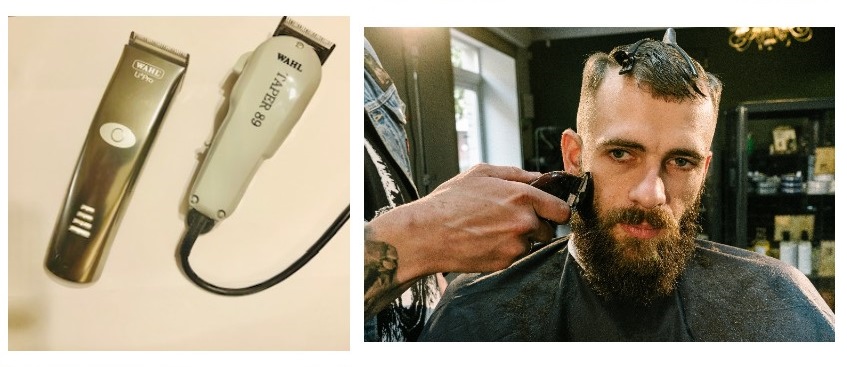
Why use a clipper and not a trimmer? Clippers are useful for working on larger areas or where a large amount of hair needs to be reduced or removed.
Trimmers
The trimmer is a smaller, more compact version of the clipper. This makes the trimmer ideal for detailing, refining, and outlining a haircut or facial design, and trimming eyebrows. The trimmer is also referred to as an outliner or edger.
Trimmers come in a variety of blade widths and designs (i.e., straight or T-shaped blade). Their use depends on the barber/stylist’s preference, or on specific design techniques used in particular areas of the face and nape.
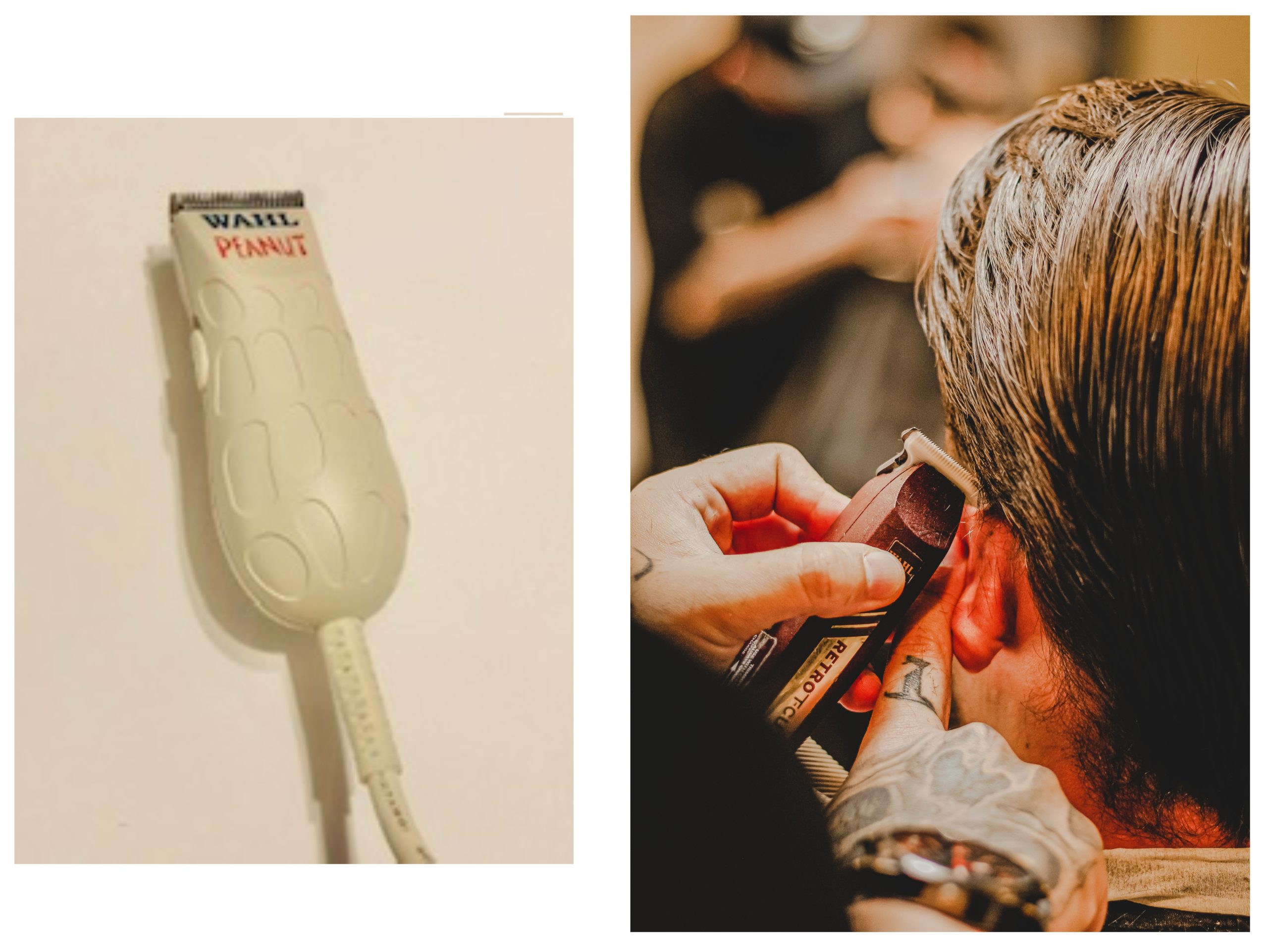
Trimmers have a much finer cutting blade than that of clippers, so when used with light pressure on the skin they can effectively remove the hair without discomfort. Keep in mind that using too much pressure with a trimmer/outliner runs the same risk of causing abrasions or irritation as the larger clipper.
Guards
Guards are attachments that are made to fit clippers and trimmers. They enable the hair to be cut to an even, predetermined length. Guards are most often made of hard plastic. However, there are rubber and steel varieties available as well.
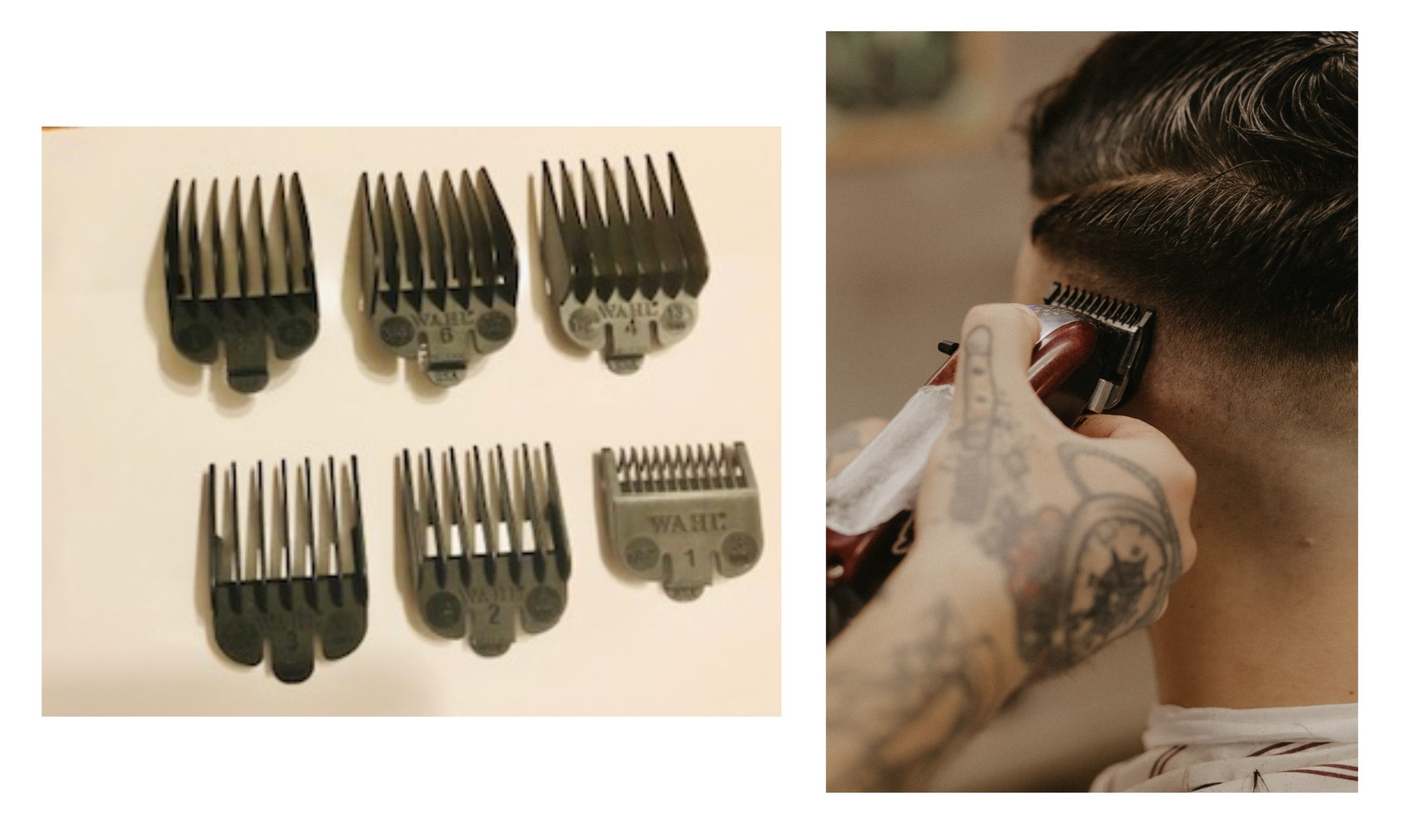
Due to the rigidity of the guards, there may be a loss of tension throughout the cutting process. This loss of tension can result in lines, ridges, or uneven results in the final design. To avoid imperfections when using a guarded clipper, use multiple passes from multiple directions to ensure an even and blended outcome.
Combs
While combs are available in various styles or sizes, there are two styles used primarily in facial hair and nape services. The all-purpose cutting comb is useful for scissor-over-comb and clipper-over-comb techniques, when removing length through the beard or nape areas. The tapered cutting comb is ideal for moustache trims and blending in tight areas such as around the ears.


Straight Razors
Shaving services that demand a close, clean cut require the use of a razor. These services include facial, nape, and neck shaving. The outlining of a haircut can also be achieved using a razor as an alternative to shears.
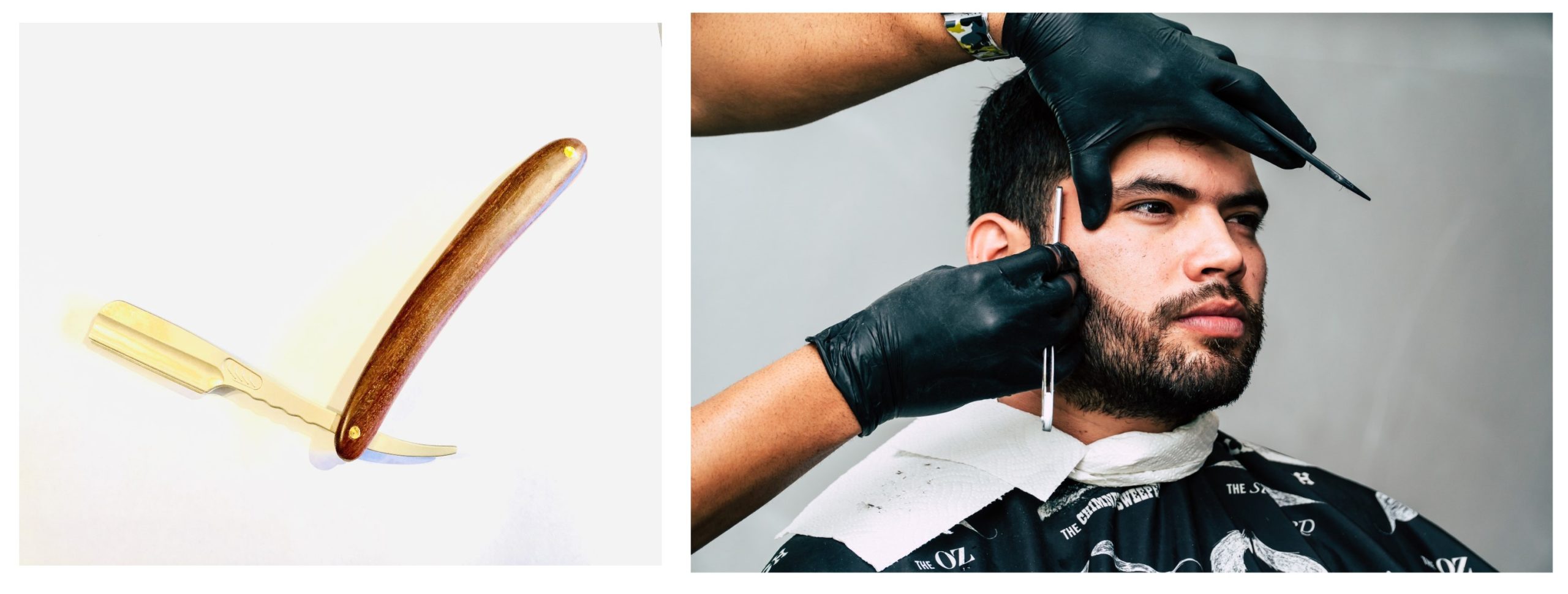
A razor is the sharpest cutting tool available to the barber/stylist, and is available in two styles:
- Single-use/changeable blade
- Conventional blade
Single-Use Blade Razor
The single-use razor is a lighter-weight option that uses disposable blades. The blades are slid into the head of the razor and can be used with or without a guard. These razors are favorable as they do not require the need to hone or strop the blade, and they are easier to keep clean and sanitary due to their disposable nature.
A single-use blade razor is used in two ways:
- Without a guard to shave the skin
- With a guard to razor cut the hair
Conventional Blade Straight Razor
The conventional straight blade razor is a steel implement that has been balanced and tempered for optimal use. These razors must be thoroughly cleaned after each client, and require constant maintenance by honing and stropping the razor to maintain a sharp cutting edge.
Honing is the process of sharpening the razor by methodically stroking the blade edge along a hone, which is a block of abrasive material.
Stropping is the process of smoothing and shaping the honed razor into a precise cutting implement by methodically passing the blade edge along a durable canvas or leather strap.
A good quality conventional straight razor can last a barber/stylist many years if it is consistently sharpened and maintained.
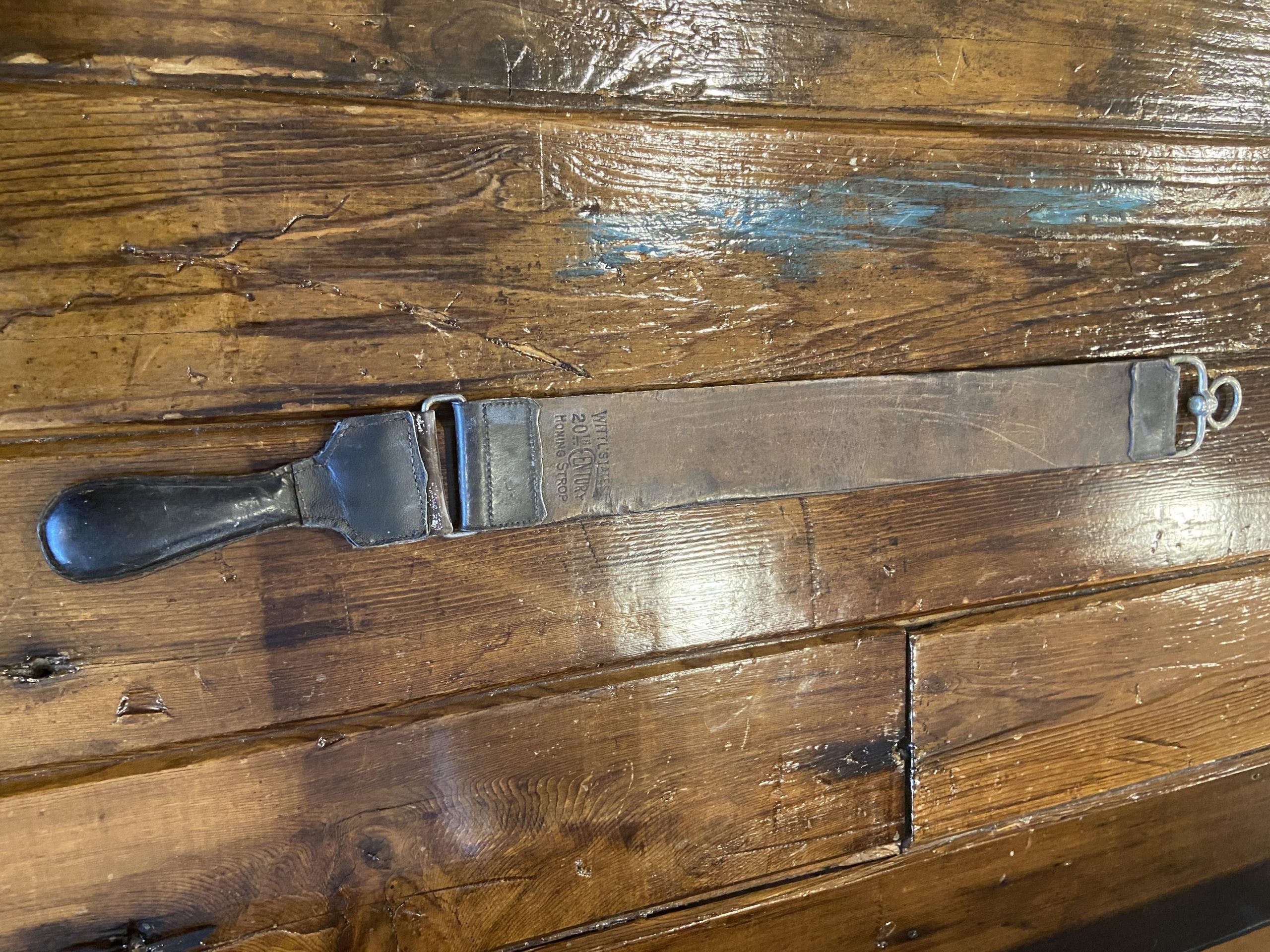
Lather Receptacles
The lather receptacle is used to hold and dispense the soap lather during the shave. The most common receptacles typically used in barber shops today are the electric lather receptacle and the lather mug, which is also known as a barber scuttle.
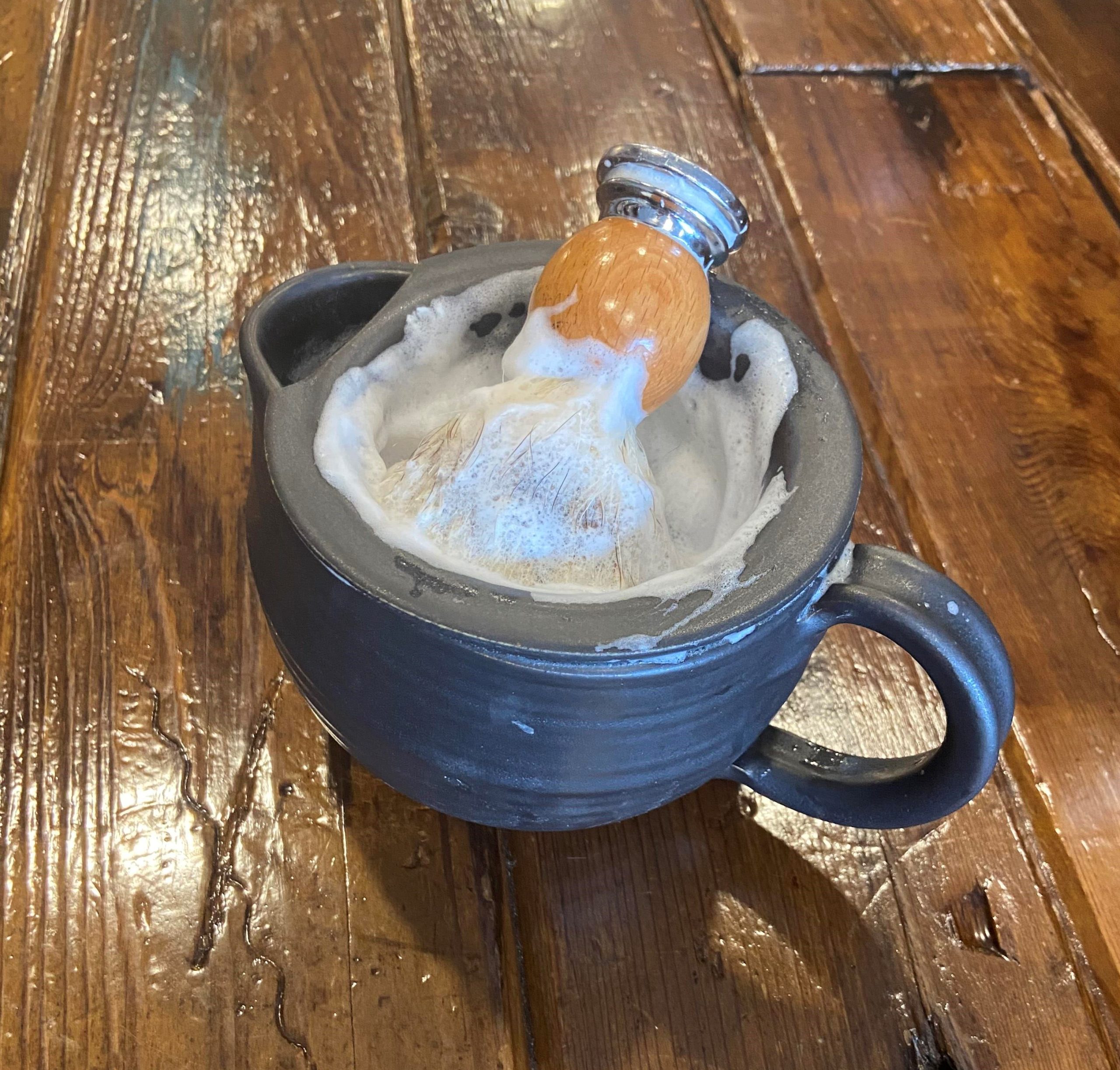
Lather Brush
The lather brush is used to apply soap lather to soften the beard during the shaving process.
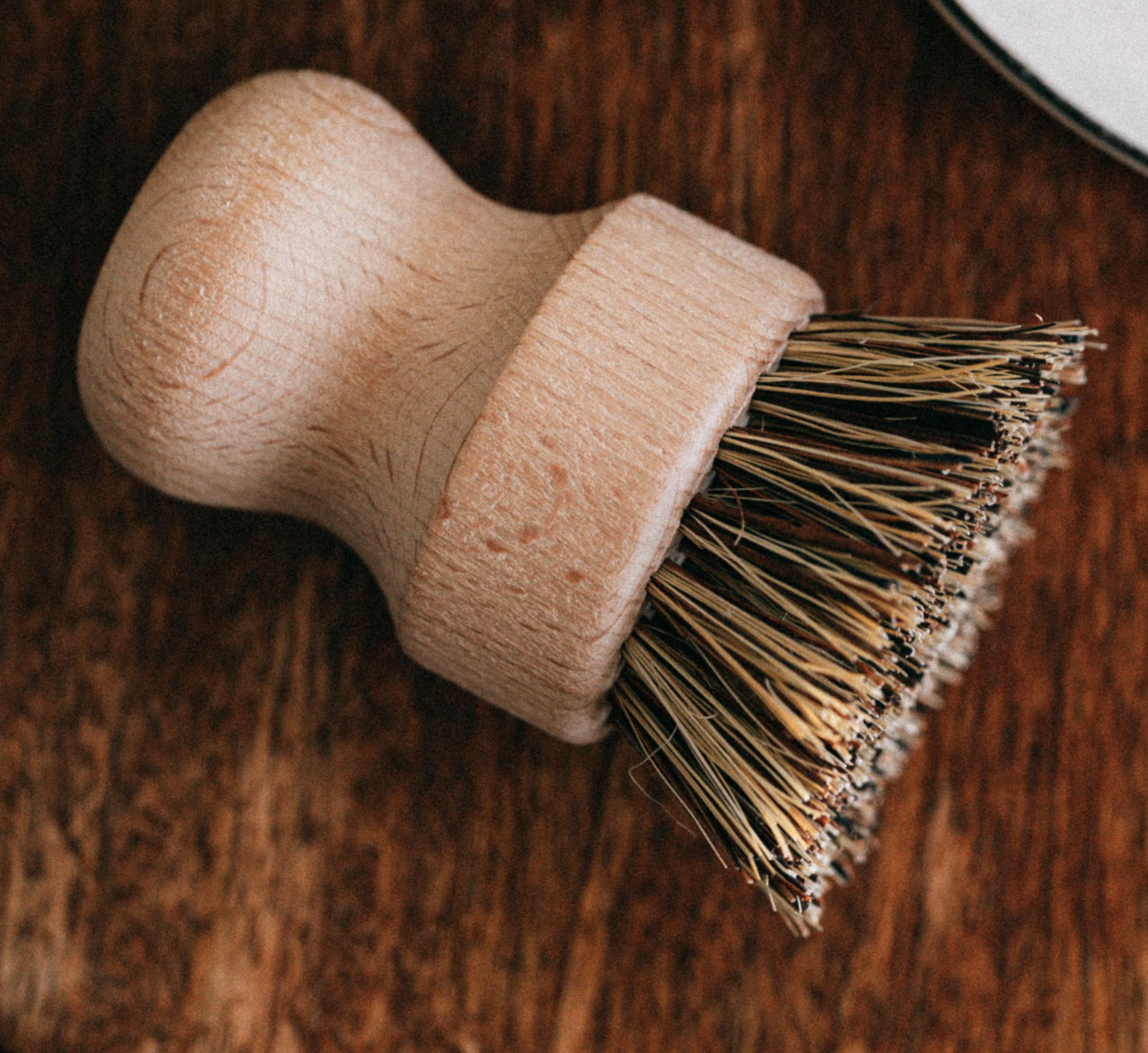
Towel Warmer
The towel warmer is an efficient way to simultaneously store and heat the damp towels needed for the shaving service. Towels are wetted, rung out, and placed within the towel warmer to prepare them for the client.
Neck Strips
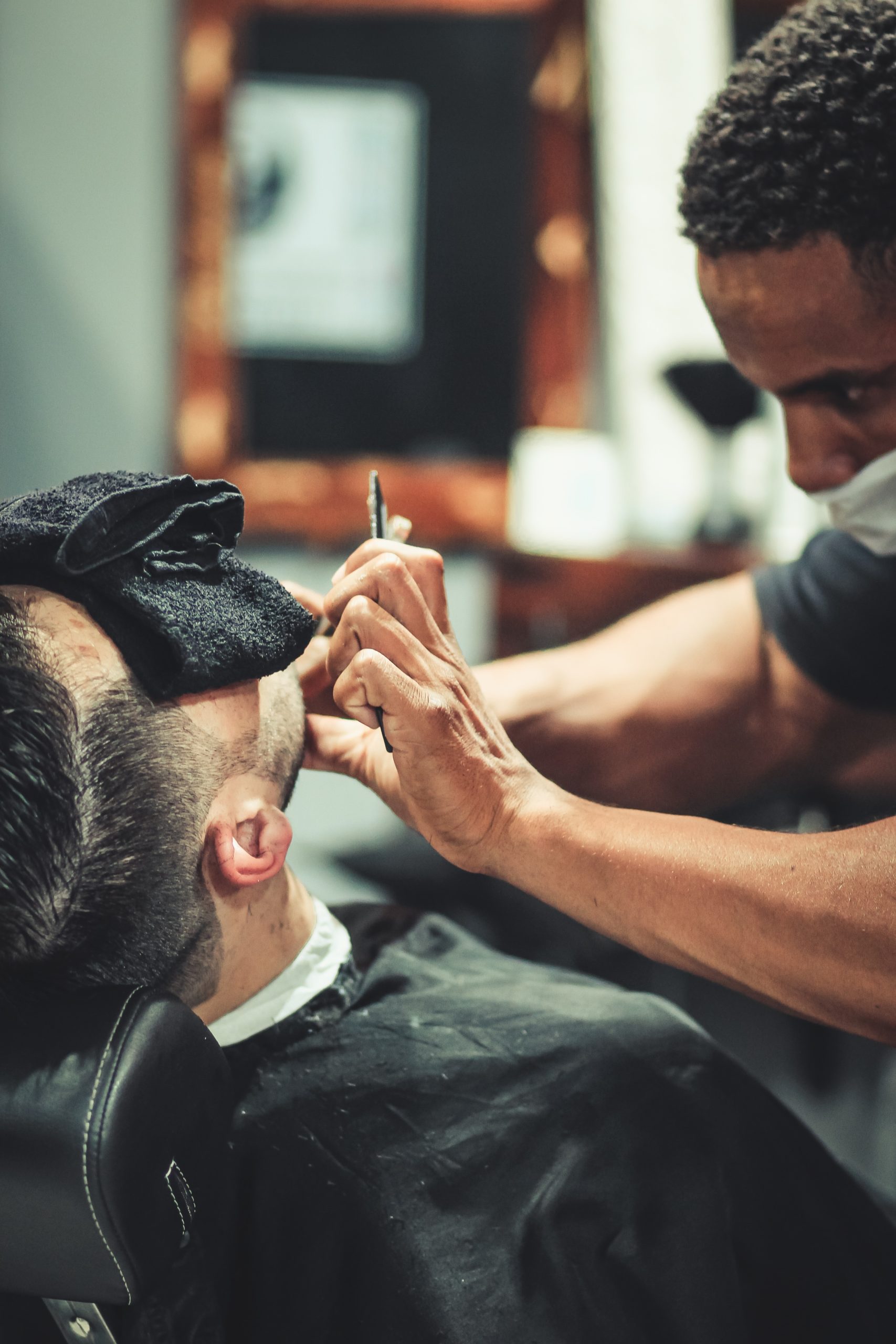
Neck strips are used to protect the client’s skin from coming into contact with the cape for sanitation and hygiene purposes. They are also useful in providing a barrier to prevent hair from falling below the cape’s edge and causing itchiness and discomfort. Apply a fresh neck strip for each client, and at any time during the service if the strip becomes wet or covered in hair.
Cutting Cape
The cutting cape is used to protect the client’s clothing and skin from falling hair and lather.
Media Attributions
- Title Image by Nick Demou is licensed under a Pexels Licence.
- “Using Shears to Trim the Side of a Beard” video by cottonbro is licensed under a Pexels Licence.
- Shears image 1 by cottonbro is licensed under a Pexels Licence.
- Shears image 2 by cottonbro is licensed under a Pexels Licence.
- “Clippers” by BCcampus is licensed under a CC BY 4.0 Licence. It includes the following images: Left: Clippers by Gary Franceschini is licensed under a CC BY 4.0 Licence. Right: Clipper in use by Anthony Shkraba is licensed under a Pexels Licence.
- “Trimmers” by BCcampus is licensed under a CC BY 4.0 Licence. It includes the following images: Left: Wahl Peanut: Photo by Gary Franceschini is licensed under a CC BY 4.0 Licence. Right: Trimmer in use by Jonathan Nenemann is licensed under a Pexels Licence.
- “Guards” by BCcampus is licensed under a CC BY 4.0 Licence. It includes the following images: Left: Clipper Guards by Gary Franceschini is licensed under a CC BY 4.0 Licence.Right: Clipper in use 2 by Maksim Goncharenok is licensed under a Pexels Licence.
- Comb images by Gary Franceschini are licensed under a CC BY 4.0 Licence.
- “Razors” by BCcampus is licensed under a CC BY 4.0 Licence. It includes the following images: Left: Straight Razor by Gary Franceschini is licensed under a CC BY 4.0 Licence. Right: Straight Razor in use by Mídia is licensed under a Pexels Licence.
- Strop by Michael Kluthe is licensed under a CC BY 4.0 Licence.
- Scuttle and brush by Michael Kluthe is licensed under a CC BY 4.0 Licence.
- Lather Brush by Karolina Grabowska is licensed under a Pexels Licence.
- Neck Strip Image by Thgusstavo Santana is licensed under a Pexels Licence.

